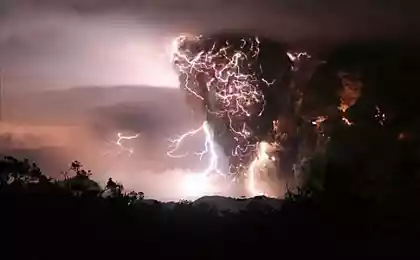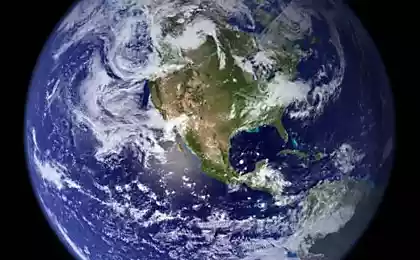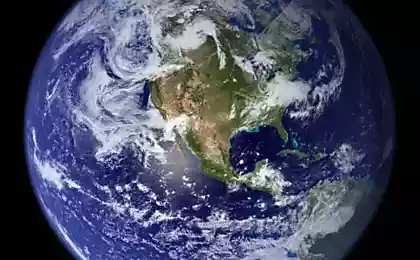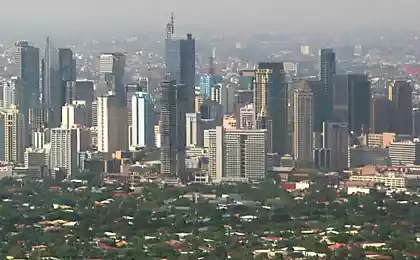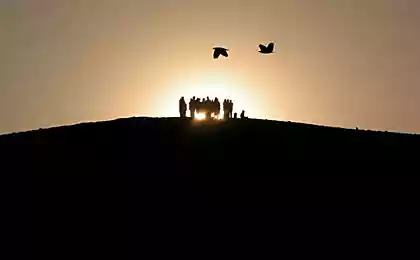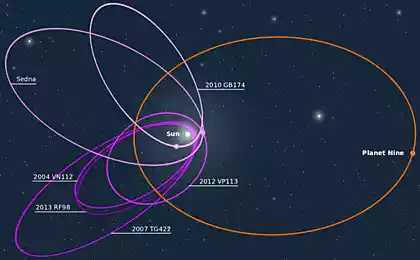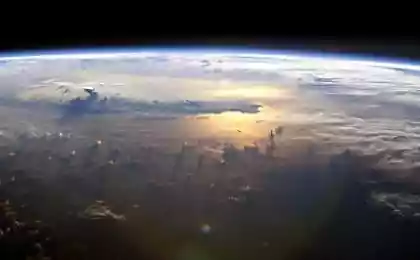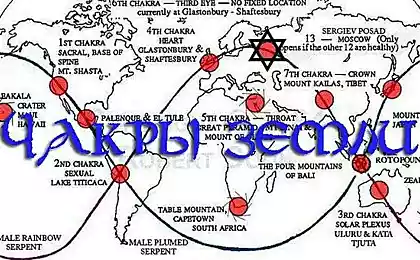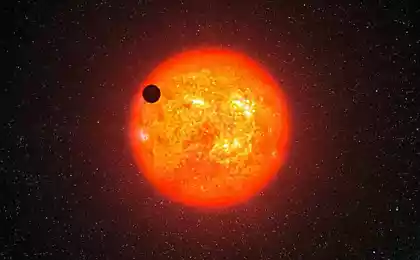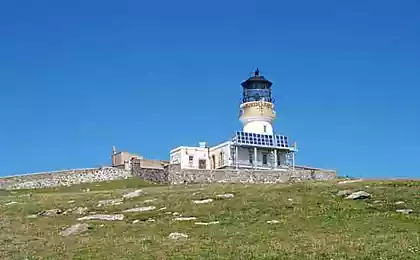1359
The most mysterious places on the planet
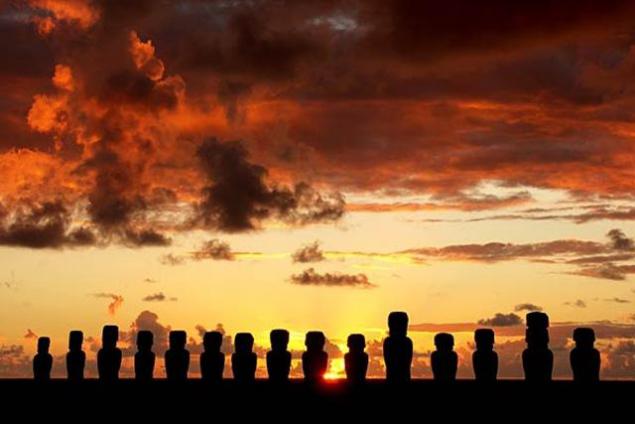
The world is full of mysterious monuments created by ancient masters. These sites have been carefully studied by scientists, historians and archaeologists, but some of them are so old, incomplete or unclear, it is still not clear why they were built and what purpose is served. I have prepared a selection of "the most mysterious places on the planet," which still cause a lot of problems, confusing the researchers.
as always go to the end ...
10. Let's start with the tenth place - Cahokia Mounds is.
Cahokia - the name given to an Indian settlement near Illinois, USA. Archaeologists believe that the city was founded in 650 AD, and the complex structure of its buildings shows that once it was highly prosperous society. At the peak of prosperity Cahokia was inhabited by 40,000 Indians - it was the most populous settlement of America before the arrival of Europeans. The main attraction Cahokia - earthen mounds up to 100 feet on a plot of 2,200 acres. Across the city it is also a network of terraces and it is believed that particularly important buildings such as the house of the ruler, was built on the highest terraces. During the excavations were found wooden solar calendar, called Woodhenge. Calendar played a vital role in community life, both religious and astrological, marking solstices and equinoxes.
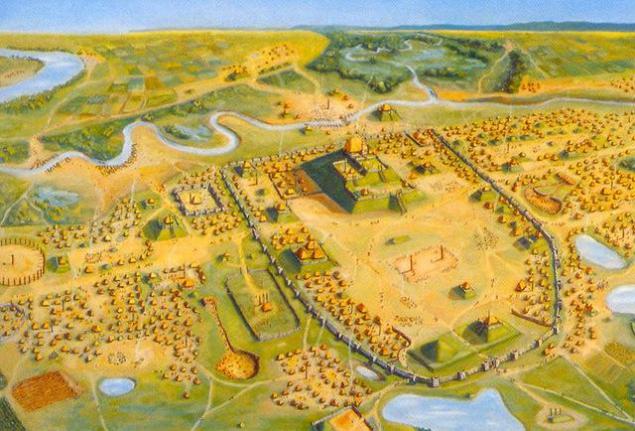
What is the secret of Cahokia mounds?
Although scientists are constantly discovering new information about the community kahokiytsev, the biggest mystery that remains - a modern Indian tribe comes from the residents of the ancient city, and that forced them to abandon their city
9. The ninth place in the list - Newgrange
It is believed that this is the oldest and most famous prehistoric structure in all of Ireland. Newgrange was built of earth, stone, wood and clay at about 3100 BC, about 1000 years before the construction of the pyramids in Egypt. This structure consists of a long corridor that leads to the cross-chamber, which was probably used as a tomb. The most characteristic feature of Newgrange - a precise and sturdy design, which helped structure remains completely waterproof to this day. What is most surprising - the entrance to the tomb is located relative to the sun in such a way that at winter solstice, the shortest day of the year, the sun's rays are directed through a small hole in the 60-foot pass, where they cover the floor of the central room of the monument.
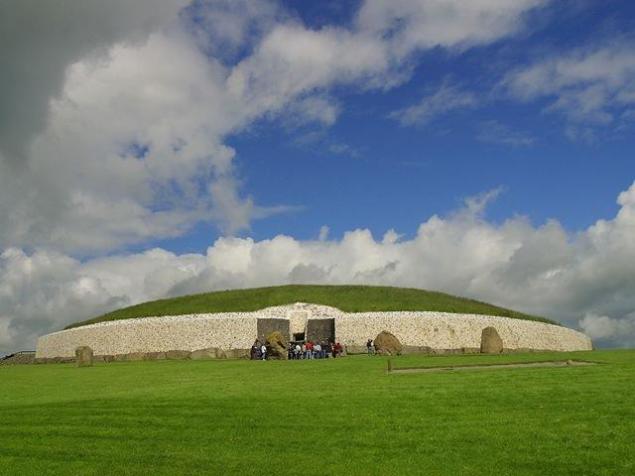
The mystery of Newgrange
Archaeologists suggest that Newgrange was used as a tomb, but why and for whom, is still a mystery. It is also difficult to determine how the ancient builders as precisely calculated structure, and the role the sun took their mythology. Scientists have not been able to determine the exact cause of the construction of Newgrange
8. On the eighth place is an underwater pyramid Yonaguni
Of all the famous monuments in Japan, perhaps none is more perplexing than Yonaguni, an underwater formation that lies off the coast of the islands Ryuku. The site was discovered in 1987 a group of divers watching the sharks. Finding instantly caused a huge amount of debate in the Japanese scientific community. The monument is made up of a number of carved rock formations including massive platform and a huge stone pillars, which lie at a depth of 5 to 40 meters. The most popular formation is called "turtle" because of its unique shape. Streams in this area is quite dangerous, but that did not stop the Yonaguni Monument to become one of the most popular places for diving in all of Japan.
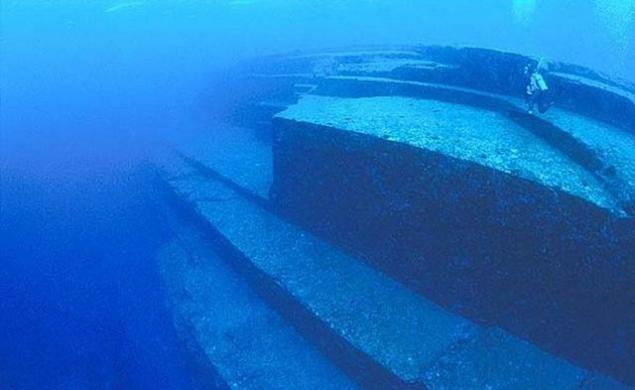
The mystery of Yonaguni Monument
The ongoing debate surrounding Yonaguni based on one key issue: whether the monument - a natural phenomenon, or created artificially? Scientists have long argued that the Millennium strong currents and erosion vytochili the formation of the ocean floor, and they point to the fact that the monument - a single piece of solid rock. Others point to a plurality of straight edges, square corners and a lot of formations of different shapes, proving that the monument has an artificial origin. If the proponents of artificial origin are right, there is a more interesting mystery who built the monument Ionaguni, and for what purpose?
7. Nazca Lines
Nazca Lines - number of lines and icons located on a dry plateau in the desert of Nazca, Peru. They cover an area of about 50 miles, and were created between 200 BC and the year 700 AD, the year the Nazca Indians. Lines managed to remain intact for hundreds of years due to the arid climate region, rain and wind are very rare. Some of the lines covering a distance of 600 feet and depict a variety of subjects, from simple lines to insects, and animals.
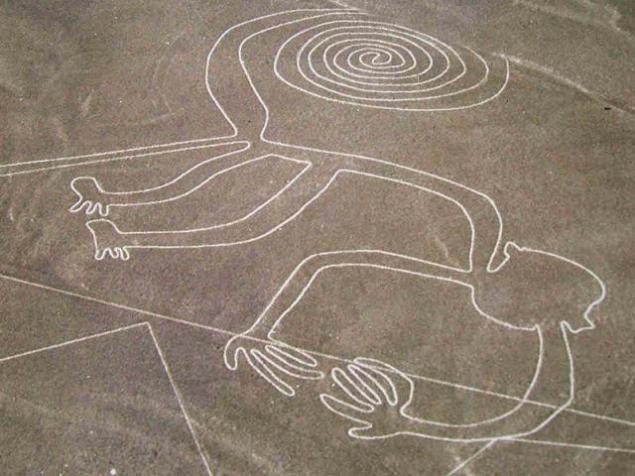
The mystery of the Nazca geoglyphs
Scientists know who made the Nazca Lines and how they did it, but they still do not know why. The most popular and reasonable hypothesis - that the line must have figured in the religious beliefs of the Indians, and that they had done these drawings as the laying on of the gods, who will be able to see them from heaven. Other scientists argue that the line - evidence of the use of massive looms as one researcher even made the preposterous theory that the line - the remains of ancient airfields used extinct, technologically advanced society.
6. Sixth place is occupied goseck circle in Germany
One of the most mysterious places in Germany - goseck circle monument, made of earth, gravel and wooden palisades, which is considered the earliest example of a primitive "solar observatory." The circle consists of a series of circular ditches, walled palisade (which have since been restored). It is believed that the monument was built in about 4900 BC, Neolithic peoples
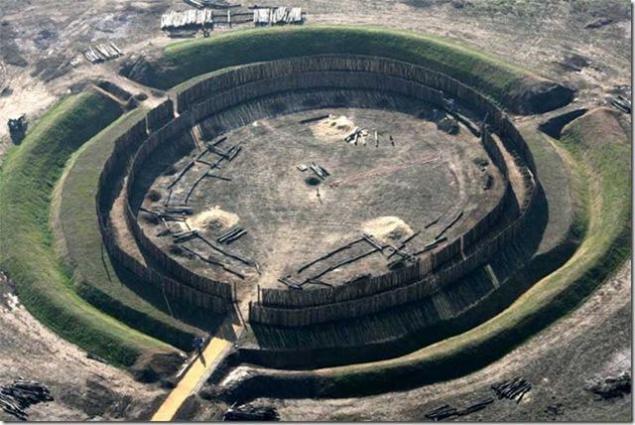
Mystery goseck circle
Accurate and high-quality construction of the monument has led many scientists to believe that the circle was built to serve some primitive solar or lunar calendar, but its exact use - still a source of debate. According to testimony, the so-called "solar cult" was widespread in ancient Europe. This led to the assumption that the terms used in some ritual, perhaps even human sacrifice. This hypothesis has yet to be proven, but archaeologists have learned a few human bones, including a headless skeleton.
5. In the fifth place mysterious Sacsayhuaman - an ancient fortress of the great Inca
Not far from the famous ancient city of Machu Picchu, Sacsayhuaman is a strange complex of stone walls. Several walls were built from massive 200-ton blocks of rock and limestone, and they are arranged in a zigzag shape along the slope. The longest block is approximately 1,000 feet in length, and each is approximately fifteen feet in height. The monument is in remarkably good condition for its age, especially considering the tendency of the region to earthquakes. Under the fortress were found catacombs likely lead to other structures of the capital of the Incas - Cusco.
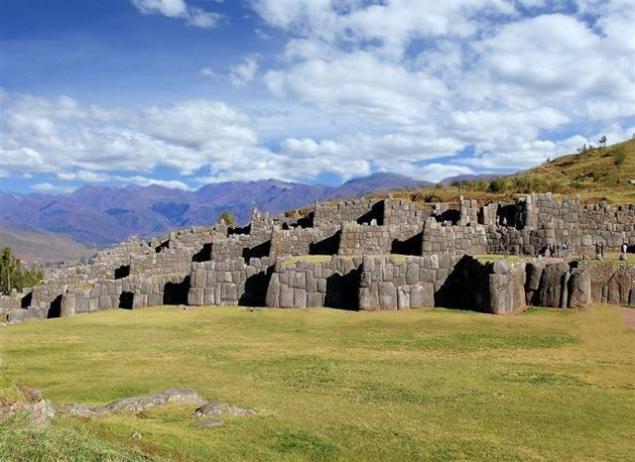
Secret of the fortress of Sacsayhuaman
Most scientists agree that Sacsayhuaman served as a kind of fortress. However, this issue is quite controversial, as there are other theories. Even more mysterious methods used in the construction of the fortress. Like most Inca stone buildings, Sacsayhuaman was built of large stones that fit together so perfectly that even a piece of paper does not pass between them. The way the Indians managed to transport so heavy stones, is still not known.
4. The fourth place is occupied by Easter Island near the coast of Chile
On Easter Island Moai are monuments - a group of huge human statues. Moai were carved sometime between 1250 and 1500 AD, the earliest inhabitants of the island, and is believed to represent the ancestors of the people and the local gods. The sculptures were carved and cut from tuff volcanic rock, which is common on the island. Researchers found that originally had 887 articles, but the years of fighting among the clans of the island led to the fact that they have been destroyed. Today, only 394 statues still stand, the largest of which is 30 feet tall and weighs over 70 tons.
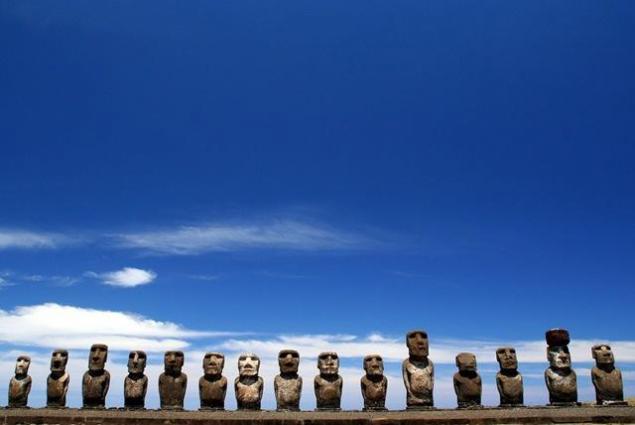
The Mystery of Easter Island
Scientists have reached a consensus on the issue of the installation of statues of reasons, but the islanders have made them - are still subject to debate. The average Moai weighs several tons, and scientists can not describe how the monuments were transported from Rano Raraku, where most of them were built in various parts of Easter Island. In recent years, the most popular theory is that the builders used wooden sledges and sticks to move the Moai. This also answers the question how such a green island has become almost completely barren
Now go to the top three rated "most mysterious places of the earth".
3. In third place is the Georgia Guidestones.
At that time, most places have become riddled millennia later, Georgia Guidestones were initially a mystery. The monument consists of four monolithic slabs of granite that support only the capstone. The monument was created in 1979 under the pseudonym of a man RC Christian. The monument is oriented to the cardinal, in some places are holes pointing to the North Star and the Sun. But the most interesting inscriptions on the stones, which are a guide to the future generations, the survivors as a result of global cataclysm. These inscriptions have caused a lot of disputes and disturbances, the monument was repeatedly desecrated.
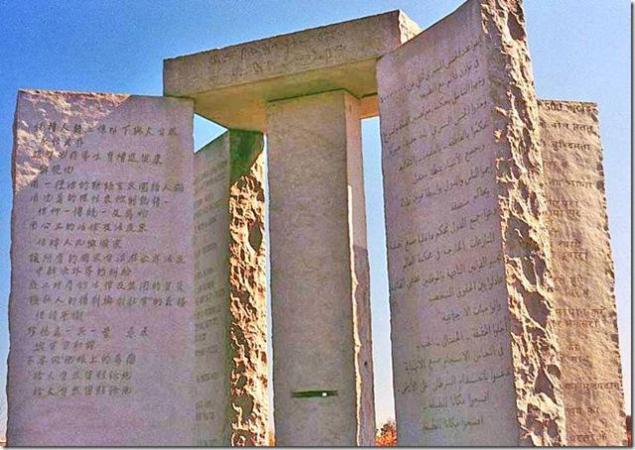
Mystery Tablets Georgia
In addition to many contradictions, very little is known about who built the monument, or what its true purpose. R.C. Christian claimed that he represented the independent organization and is not in contact with them after the construction. Since the monument was built during the height of the Cold War, one popular theory is the group's intention is that the Georgia Guidestones were to serve as a primer for those who will begin to restore the society after a nuclear holocaust. For more information about the inscriptions on the stones can be found at the link above.
2. The list of puzzles has no right to exist if it is not the Egyptian Pyramids - the most mysterious structures of the past. In second place The Great Sphinx of Giza
Incredibly, the statue of the Sphinx is carved from a single monolithic part of the cliff, is 240 feet long, 20 feet wide and 66 feet high. It is the largest monument of its kind in the world. Historians largely agree that the function of the Sphinx was symbolic, since the statues were placed around strategically important structures such as temples, tombs and pyramids. Great Sphinx of Giza is standing next to the pyramid of Pharaoh Khafre, and most archaeologists believed that his face is depicted in the statue
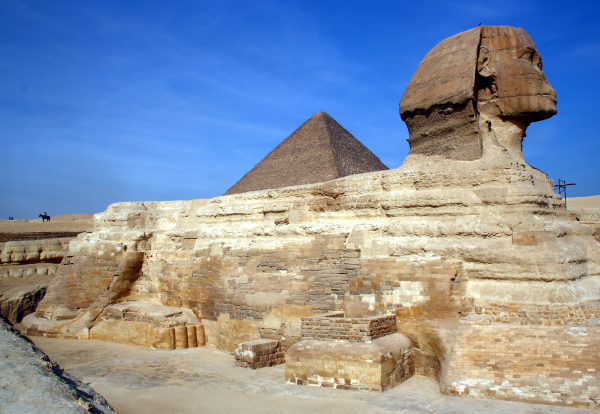
The Mystery of the Great Sphinx
Despite a reputation as one of the most famous monuments are still many mysteries surrounding the Sphinx of Giza. Do Egyptologists have opinions about the reasons for the construction of the statue, but the absolute mystery is when, how, and by whom it was created. If it was the Pharaoh Khafre, the sculpture dates back to the year 2500 BC, but other scientists have argued that the evidence of water erosion of the statue suggests a much greater age of the Sphinx. If this theory is correct, then the builders were not the ancient Egyptians.
1. The first place - the most mysterious place of the planet - Stonehenge in England
Of all the famous monuments in the world neither shrouded in such mystery as this. The ancient monument is the debate scientists, historians and scholars since the Middle Ages. Stonehenge - a stone megalithic structure in 130 km south-west of London. On a circle along the outer shaft located 56 small funeral "Aubrey holes", named in honor of John Aubrey, who first described them in the XVII century. To the north-east of the entrance to the ring was a huge, seven-Heel Stone. Although Stonehenge looks very impressive, it is considered that its modern version - a small remnant of a much larger monument that was damaged over time
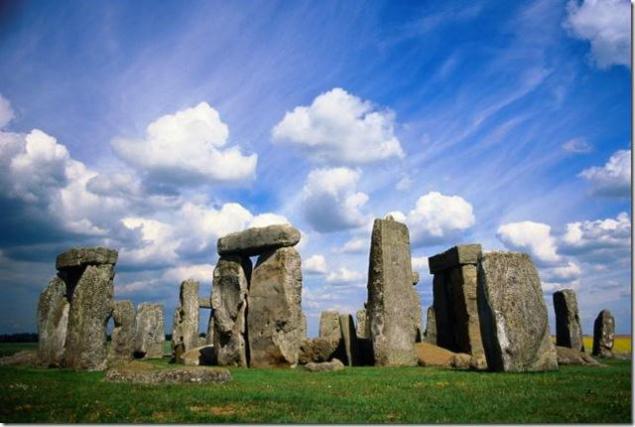
The mystery of Stonehenge
The monument became famous puzzle even the most brilliant researchers. Neolithic people who built the monument, left no written, so scientists can only base their theory based on the current structure and analyzing it. This has led to such an assumption, that the monument created aliens, or that it was built a highly technologically advanced society superhumans. Discarding all the madness, the most common explanation is that Stonehenge served as a burial monument near. Confirmation are found next to several hundred burial mounds. Another theory suggests that the site was a place for spiritual healing and religion.




